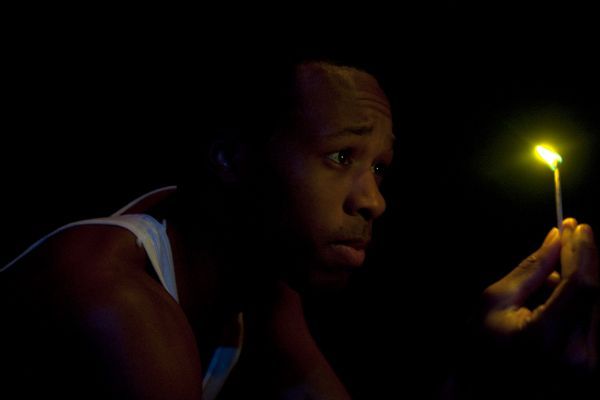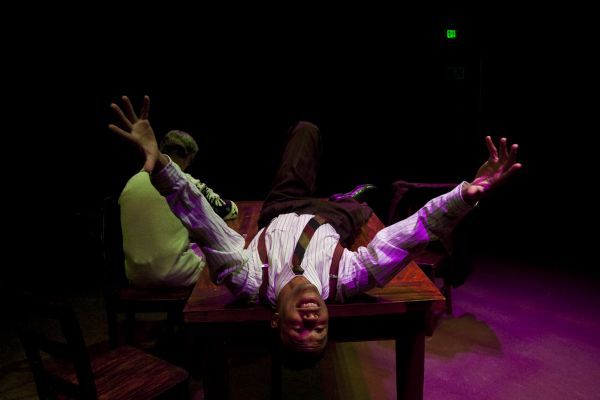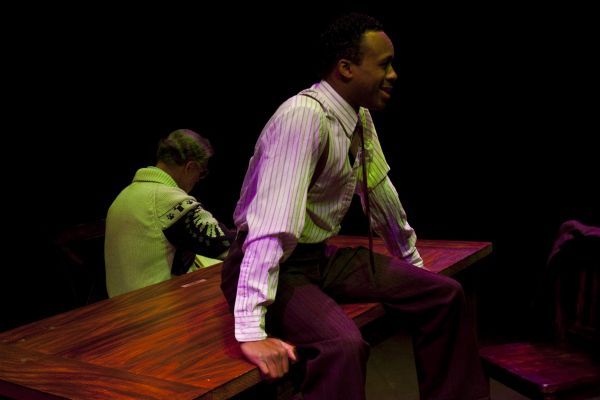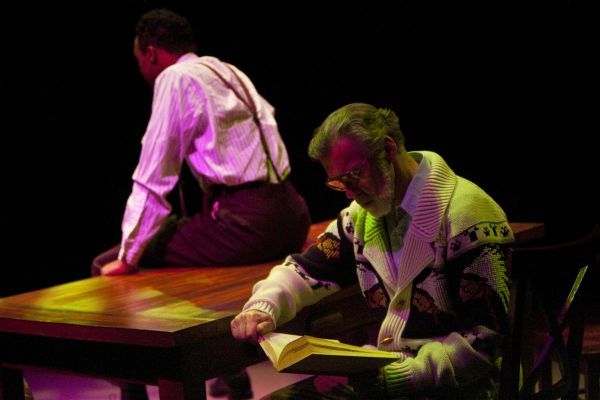This is an archived article that was published on sltrib.com in 2010, and information in the article may be outdated. It is provided only for personal research purposes and may not be reprinted.
Most Utahns have heard of Wallace Stegner and his literary accomplishments as a Pulitzer Prize-winning novelist and dean of Western writers.
Fewer know much about another Utah writer named Wallace: Wallace Thurman, a young, gay black man, was an influential figure in the flowering of the Harlem Renaissance.
The two men occupied completely different worlds, one achieving literary fame, the other virtually unknown after dying young, but their stories and works of literary activism have sparked Plan-B Theatre's world premiere of "Wallace."
"It's about these two very strong, very passionate men who are from this place," said director Jerry Rapier. "It's really an experiment on how we view our own history. What does home mean in the context of grounding you in your own life? What is the power of the place that is your home, whether it is the home you choose or it's yours by default?"
The project developed over the past two years. While Rapier was directing Debora Threedy's 2008 play "The End of the Horizon," about the young artist and poet Everett Ruess, who disappeared in Southern Utah in 1934, local bookstore owner Ken Sanders mentioned Thurman, another Utah novelist.
The name drew a blank. "Who the hell is Wallace Thurman?" Rapier recalls thinking.
Upon discovering Thurman's work, the idea for a play was set. "The fact that he was black made it difficult to know how to quantify him in the history of Utah, and the fact that he was gay," Rapier says. "If you're looking for a combination of things that are difficult to talk about in the early history of Utah, a gay black man is about as difficult as it gets."
About a year later, Rapier directed a stage reading of Threedy's one-act play about Wallace Stegner at the University of Utah, as part of a commemoration of the author's 100th birthday.
Thinking about Wallace Thurman, Rapier approached local playwright Jenifer Nii about investigating the writer's story. Her response was familiar: "Who the hell is Wallace Thurman?"
The two playwrights, Threedy and Nii, wrote separate scripts about the writers. Threedy focused on the more personal side of Stegner, telling a story of redemption, how the writer surmounted his difficult relationship with his father and opened himself up to the love of his life, his wife, Mary. Among other autobiographical materials, Threedy drew upon excerpts of a letter Stegner sent to his wife.
Throughout his accomplished academic and literary career, Stegner produced more than 30 novels and nonfiction books and in 1961, was appointed as the assistant to Interior Secretary Stewart Udall during the Kennedy administration. That government appointment was short but notable, as a widely quoted piece of Stegner's prose that came to be the "Wilderness Letter," helped to spur passage of the national Wilderness Act of 1964.
"We simply need that wild country available to us, even if we never do more than drive to its edge and look in," Stegner wrote. "For it can be a means of reassuring ourselves of our sanity as creatures, a part of the geography of hope."
Thurman was a sickly child, growing up in Salt Lake City and elsewhere in the West, graduating from West High in 1919. He attended the University of Utah for two years before moving to Los Angeles and then New York City.
Always a voracious reader, he was born African-American during a time when the KKK was ascendent. He came out as gay, after a failed, six-month marriage. In an essay titled "Quoth Brigham Young -- This is the Place," he spared no words about his home town. "Everyone in the state seems to be more or less of a vegetable, self-satisfied and complacent," Thurman wrote near the essay's end.
Settling in Harlem in 1925, he published a novel The Blacker the Berry: A Novel of Negro Life , and even a satire on the Harlem Renaissance titled Infants of Spring . Some credit Wallace as the first to criticize racism among African-Americans, for judging each other based on how dark their skin was within the spectrum of light and dark.
"He was dead at age 32 through a combination of tuberculosis and alcoholism," Sanders said. "Nothing was ever good enough for Wally Thurman."
With significantly less material available about Thurman, Nii, the playwright had a bit more artistic freedom to develop a story about a writer making his own path.
"The thing that resonated with me, because I grew up a minority in a pretty homogenous place," says Nii, who is Japanese-American and grew up in southeast Idaho, "was the notion of succeeding or achieving based on the quality of the work, rather than based on the popularity or novelty."
Both men returned to Utah periodically. For Stegner, Utah was where he found himself. Thurman returned from time to time to recuperate from his hectic New York City life, while the majority of his strongest work was written here, Rapier says.
When the two scripts were completed, Rapier took on the task of combining them to create a 70-minute play. Yet the characters -- retired University of Utah professor Richard Scharine portrays Wallace Stegner, while Ogden actor Carleton Bluford plays Wallace Thurman -- remain singular.
They never meet on stage, just as presumably, they didn't in life. Instead, in the theatrical telling, they live in their own worlds, with their first names and their Utah home as their only obvious connections.
Threedy says there's a message in the differences and similarities between the two men -- one who was white and achieved literary fame, and another who was black and died nearly unknown. "And yet how similar their struggles were," the playwright says. "Those internal struggles of claiming an identity and place in the world."
Ben Fulton also contributed to this story. Send comments to roxellana@sltrib.com
Plan B Theatre presents "Wallace."
When » Opens March 4; plays at 8 p.m. Thursdays, Fridays and Saturdays through March 14, with additional performances at 4 p.m. Saturdays and 2 p.m. Sundays.
Where » Rose Wagner Performing Arts Center's Studio Theatre, 138 W. 300 South, Salt Lake City.
Tickets » $20 ($10 students), at 801-355-2787 or www.planbtheatre.org. No late seating. The show is 70 minutes without intermission.
Wallace Thurman
Born » Aug. 16, 1902, graduated from West High in 1919, and attended the University of Utah for two years.
Published » The Blacker the Berry: A Novel of Negro Life and Infants of the Spring
Died » In 1934, age 32, in New York City of tuberculosis and alcoholism.
Wallace Stegner
Born » Feb. 18, 1909 in Lake Mills, Iowa; lived in Great Falls, Mont.; and southern Saskatchewan. He moved to Salt Lake City in June 1921, and graduated from East High School in 1925 and the University of Utah in 1930, where he taught English from 1934 to 1937.
Published » 30 books of novels and nonfiction, including Angle of Repose won the 1972 Pulitzer Prize, while The Spectator Bird won the National Book Award for Fiction in 1977.
Died » In 1993, age 84, in Santa Fe, N.M., after a car accident.

















